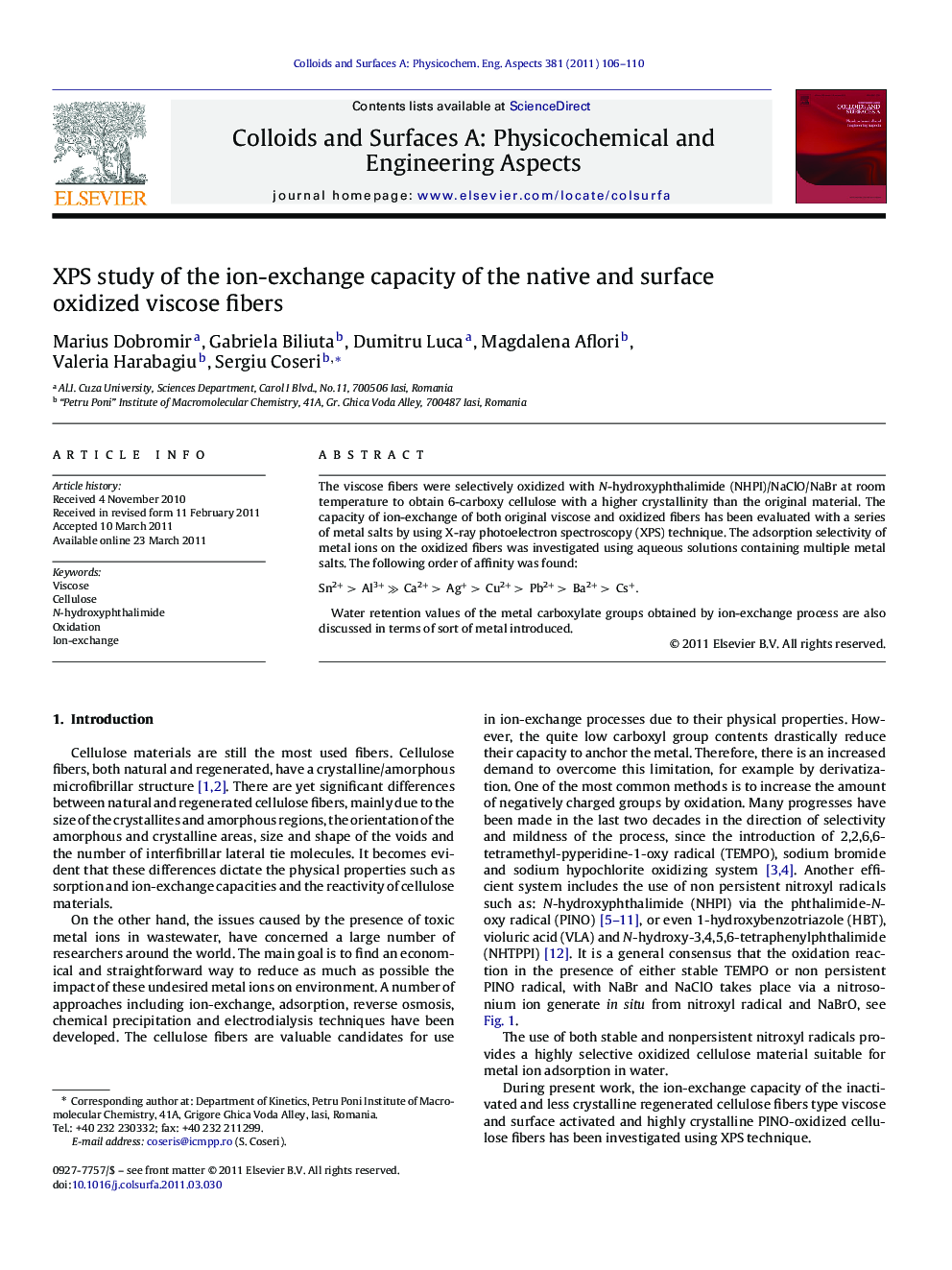| Article ID | Journal | Published Year | Pages | File Type |
|---|---|---|---|---|
| 594885 | Colloids and Surfaces A: Physicochemical and Engineering Aspects | 2011 | 5 Pages |
The viscose fibers were selectively oxidized with N-hydroxyphthalimide (NHPI)/NaClO/NaBr at room temperature to obtain 6-carboxy cellulose with a higher crystallinity than the original material. The capacity of ion-exchange of both original viscose and oxidized fibers has been evaluated with a series of metal salts by using X-ray photoelectron spectroscopy (XPS) technique. The adsorption selectivity of metal ions on the oxidized fibers was investigated using aqueous solutions containing multiple metal salts. The following order of affinity was found:Sn2+ > Al3+ ≫ Ca2+ > Ag+ > Cu2+ > Pb2+ > Ba2+ > Cs+.Water retention values of the metal carboxylate groups obtained by ion-exchange process are also discussed in terms of sort of metal introduced.
Graphical abstract. The selective introduction of carboxylic group mediated by N-hydroxyphthalimide into viscose fibers increased the metal adsorption capacity toward the original (untreated) fibers.Figure optionsDownload full-size imageDownload as PowerPoint slideHighlights► N-hydroxyphthalimide was used as a selective mediator for the mild oxidation of viscose fibers. ► XPS technique has been used to determine the metal content on original and oxidized viscose samples. ► The affinity of metal adsorption on viscose samples is highest for Sn2+ and Al3+. ► Water retention value of oxidized samples depends on the kind of metal anchored.
